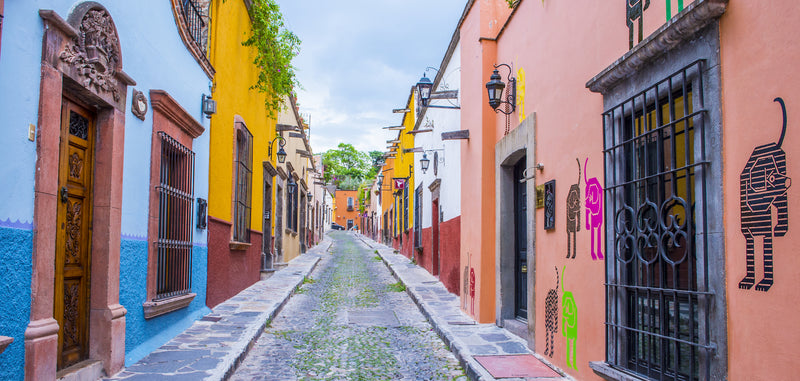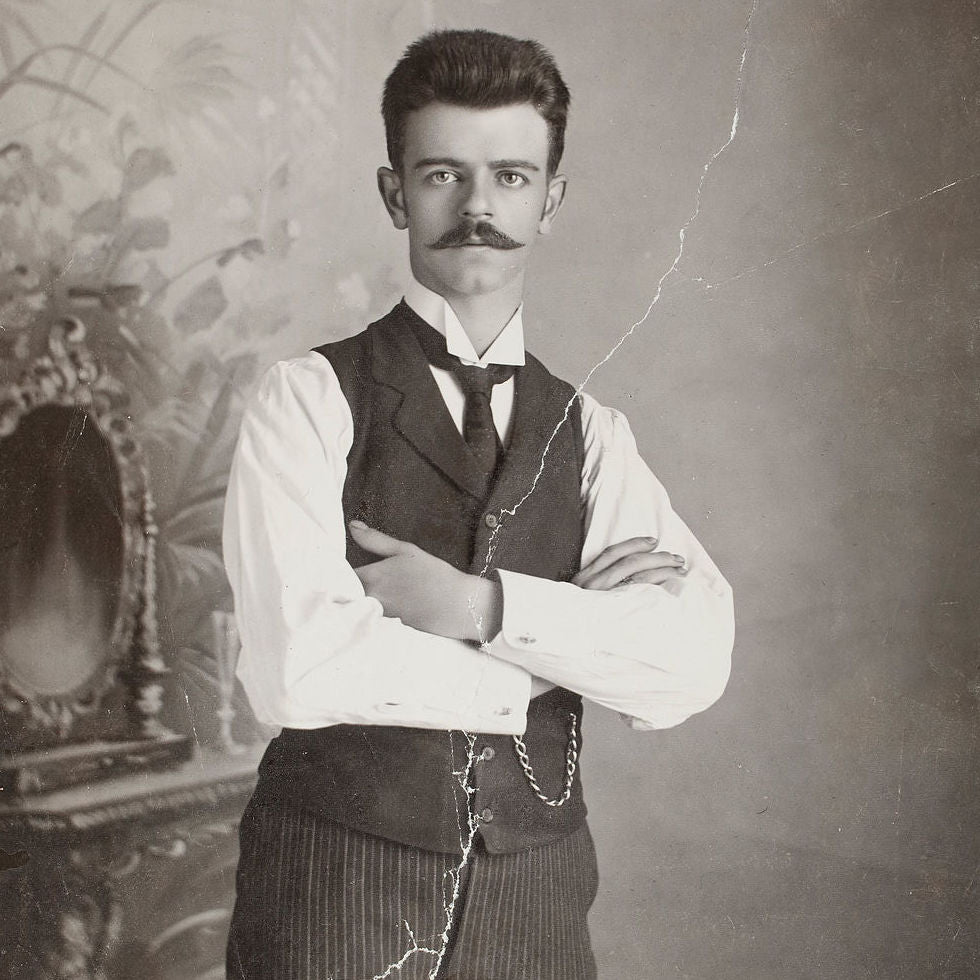In the name of the father: Guillermo Kahlo
We know Frida Kahlo, internationally recognized, the artist has even become an unavoidable icon when visiting Mexico; it is so, that her image is printed everywhere in all possible variations. We are less familiar with his father, whose trajectory is nevertheless worthy of interest. Who would have thought that this son of jewelers would become the first official photographer of the historical monuments of the government of Porfirio Diaz? Back on an extraordinary route.
 Guillermo, Wilhelm of his German name, was from Pforzheim, Germany, where his father emigrated in the mid-nineteenth century. In this southern German Empire town of artisanal and commercial tradition, father Kahlo dedicated himself to the jewelry trade and married a jeweler's daughter. Wilhelm was born of this union on October 26, 1871, under the sign of scorpion. The Kahlo family moved to Baden-Baden while little Wilhelm was barely 3 years old. Thus, the Kahlo family was of Protestant roots in an area that had adopted the Protestant Reformation and had driven all Catholics out of its territory, rather than of Jewish origin, as was popularized in the 1960’s.
Guillermo, Wilhelm of his German name, was from Pforzheim, Germany, where his father emigrated in the mid-nineteenth century. In this southern German Empire town of artisanal and commercial tradition, father Kahlo dedicated himself to the jewelry trade and married a jeweler's daughter. Wilhelm was born of this union on October 26, 1871, under the sign of scorpion. The Kahlo family moved to Baden-Baden while little Wilhelm was barely 3 years old. Thus, the Kahlo family was of Protestant roots in an area that had adopted the Protestant Reformation and had driven all Catholics out of its territory, rather than of Jewish origin, as was popularized in the 1960’s.
What motivated Wilhelm Kahlo to take off and embark in Hamburg at the age of 19 on the Borussia, through the port of Veracruz? Thirst for adventure? Quest for richness ? Perhaps it was Baden-Baden's honorary consul, Max Diener, who had lived in Mexico for a while, who advised him to cross. Guillermo had probably met the consul during his experience in the import/export of jewelry between his region and Mexico. In any case, Guillermo arrived in Mexico in 1890, then under the presidency of Porfirio Diaz who was seeking at that time his third term and who was to remain in power until 1911 during the outbreak of the Mexican Revolution. Guillermo never returned to his homeland. At the end of the 19th century, a tiny German community was living in Mexico. Five hundred people, at most.
 Wilhelm became Guillermo. He married the Mexican María Cardeña three years later and naturalized the following year; November 20, 1894, which allowed him to avoid military service in Baden. He embraced Catholicism, probably out of a desire for integration, more than by devotion. After death of his first Mexican wife in 1898, he married Matilde Calderón Gonzalez with whom he had four daughters, including Frida in 1907, originally Frieda.
Wilhelm became Guillermo. He married the Mexican María Cardeña three years later and naturalized the following year; November 20, 1894, which allowed him to avoid military service in Baden. He embraced Catholicism, probably out of a desire for integration, more than by devotion. After death of his first Mexican wife in 1898, he married Matilde Calderón Gonzalez with whom he had four daughters, including Frida in 1907, originally Frieda.
Guillermo seems to have worked in some goldsmith shops in the street of los Plateros - now Madero street - in the Historic Center in Mexico City. Then, he was introduced to photography, probably under the influence of his father-in-law, who was a photographer and motivated by a certain interest because we know that Guillermo collected postcards. He quickly obtained a first order from the German Boker business house in Mexico since 1865, to make a photographic album of their new headquarters in the Historic Center of Mexico. He found his direction.
Thus, he became an official photographer in 1901, specializing in architecture and industrial buildings. Success happened very fast. His photos were published in journals, which published several thousand copies. It is therefore not surprising, to find him in larger projects, which allow him to show the technical and economic progress of his time. He produced the famous album Mexiko 1904, which documents the exceptional architectural heritage of central Mexico City and new modern buildings.
 Teaching Church by Guillermo Kahlo
Teaching Church by Guillermo Kahlo

Puebla Cathedral by Guillermo Kahlo

National Library by Guillermo Kahlo
Metalic Bridge by Guillermo Kahlo
With this success and thanks to the legacy of his father who died in 1903, he acquired the house of Coyoacán, an old hacienda named Las Carmelitas, an order installed in Mexico since the late sixteenth century.
Guillermo continued his work. He became the official photographer of the "historical monuments" of the government and tirelessly photographed, not only the baroque architectural heritage but also the modern buildings with all the new steel structures that rose like mushrooms, with ease and quantity - 2000 photos in 22 albums - which make us forget, in the era of digital photography, the difficulties and the complexity of the photographic techniques of the time. Guillermo's photos were made using the technique of dry plate (gelatino-silver bromide) for the production of negatives on glass plate, introduced in 1871, a technological revolution at the time.
 So why was the work of this exceptional photographer eclipsed by that of his daughter? Certainly, the paintings of the latter, such as "selfies" were more likely to seduce our time. But it is also that the work of the father was part of an era, that of Porfirio Diaz, appropriate to him, for mainly ideological reasons, after the Mexican Revolution, to forget, at any cost.
So why was the work of this exceptional photographer eclipsed by that of his daughter? Certainly, the paintings of the latter, such as "selfies" were more likely to seduce our time. But it is also that the work of the father was part of an era, that of Porfirio Diaz, appropriate to him, for mainly ideological reasons, after the Mexican Revolution, to forget, at any cost.
Frida, however, paid homage to her father in a famous portrait exhibited at Casa Azul in Coyoacán. It is him who initiated her into photography and who offered her her first box of painting after the terrible accident in which she was victim in 1925. One knows the continuation, the meeting with Diego, their tumultuous life.
Source: Peter Krieger, http://www.scielo.org.mx/pdf/aiie/v29n90/v29n90a9.pdf
In German: Fridas Vater: Der Photograh Guillermo Kahlo von Pforzheim nach Mexico, Gaby Franger and Rainer Hulhe.
About our Author:
Marion Du Bron, Founder of DestinationMEX
 Historian PhD, School of High Social Sciences Studies (EHESS), Paris.
Historian PhD, School of High Social Sciences Studies (EHESS), Paris.
She has lived in Mexico since 2003.
Unconditionally passionate for Mexican history and culture.
Entrepreneur and coach for foreigners.




0 comments